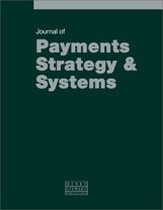Real-time financing: Extending e-invoicing to real-time SME financing
Abstract
Small and medium-sized enterprises (SMEs) are becoming increasingly dependent on alternative ways to finance their working capital, as their trading counterparts are extending payment terms, and increased capital requirements are forced upon banks, limiting access to traditional sources of funding. At the same time, financing SMEs is not trivial: (1) traditional supply-chain finance is not scalable to achieve mass adoption and (2) factoring involves risk assessment on the basis of historical data, leading to a certain minimum financing value. Innovative non-bank players are also addressing this market with new platforms with state of the art technology, but encounter the same limitations. With the advance of digital invoicing, payment and risk techniques, new methods for financing SMEs are becoming possible. The paradigm described here consists of creating a collaborative network in which payment status information on payable invoices is being exchanged in real-time and on request from the creditor SME or its lender. Real-time Financing (RTF) makes it easier for SMEs to receive financing on their accounts receivable, since lenders can automate their process of financing, irrespective of the service provider of its trading counterpart. As such, trading entities can reside with their own service providers and do not need to join a new provider to service a specific business relation. For lenders, RTF makes it possible to increase the frequency of financing transactions against a lower risk per engagement as risk information (ie invoice status information) is made available in real-time. The backbone of RTF is a collaborative scheme for standardising invoice payment status messages and puts its participants in a legal and trusted business relation with each other. Participants include actors throughout the financing value chain, including software vendors, e-invoicing providers and banks. The creation of such a scheme will be a challenge, however, since this requires cooperation between, in essence, competing parties, but considering today’s tight credit supply, the incentives for stakeholders might be strong enough to undertake such venture.
The full article is available to subscribers to the journal.
Author's Biography
Mounaim Cortet is an experienced strategy consultant at Innopay. He specialises in helping banks and various payment service providers operating in the payments value chain navigate through times of change in consumer behaviour, advances in fintech, and regulatory intervention (PSD2, IFR). He possesses resilient analytical and problem-solving skills with a track record in digital (growth) strategy, (open banking, API), business model innovation, and value proposition development.
